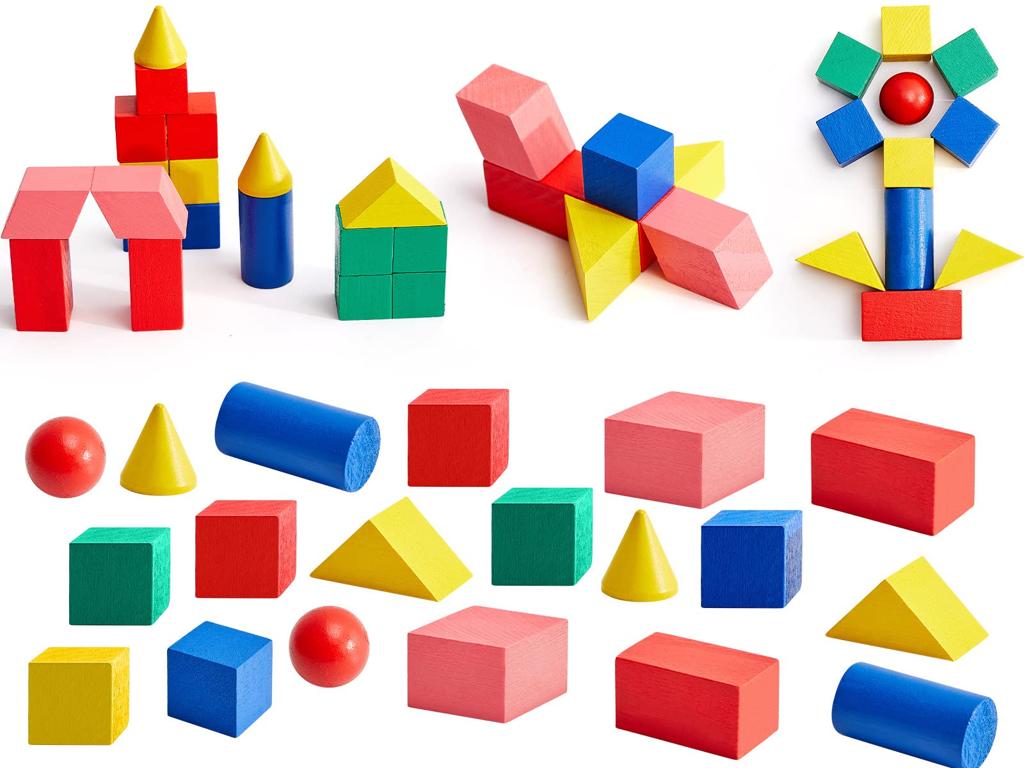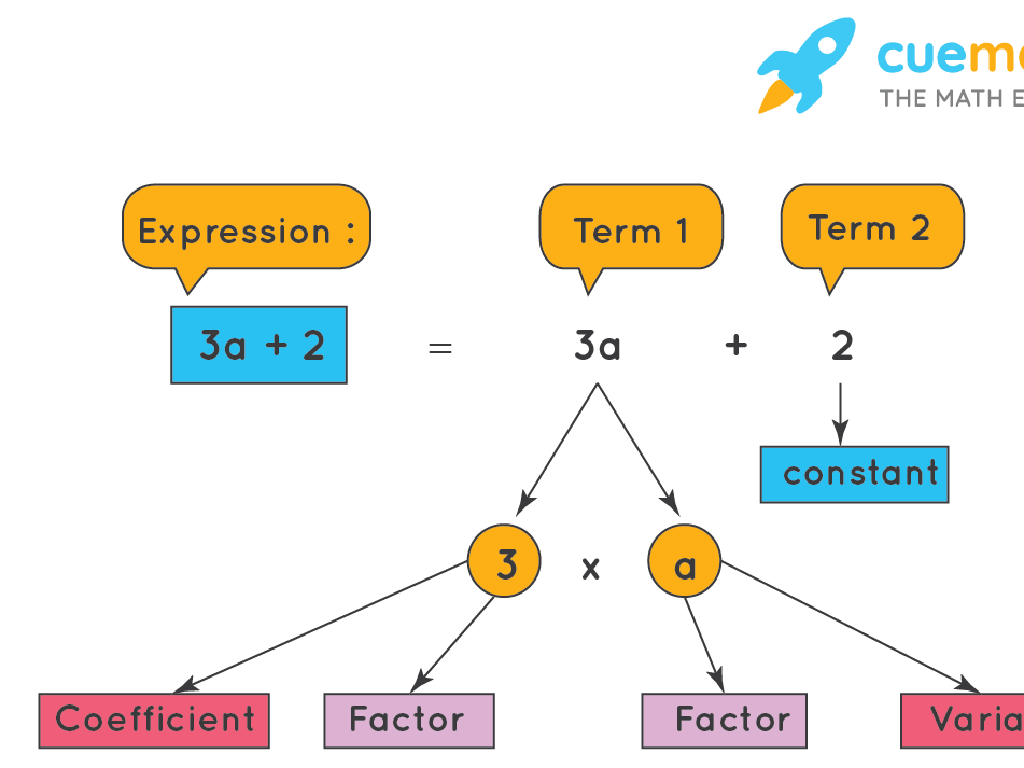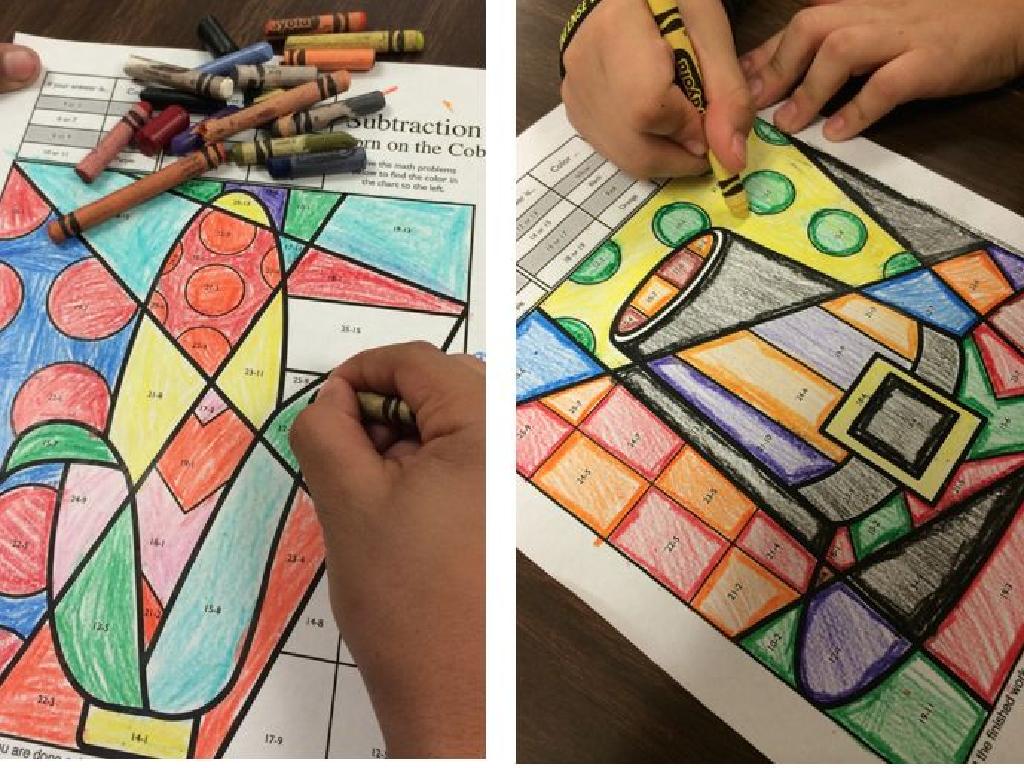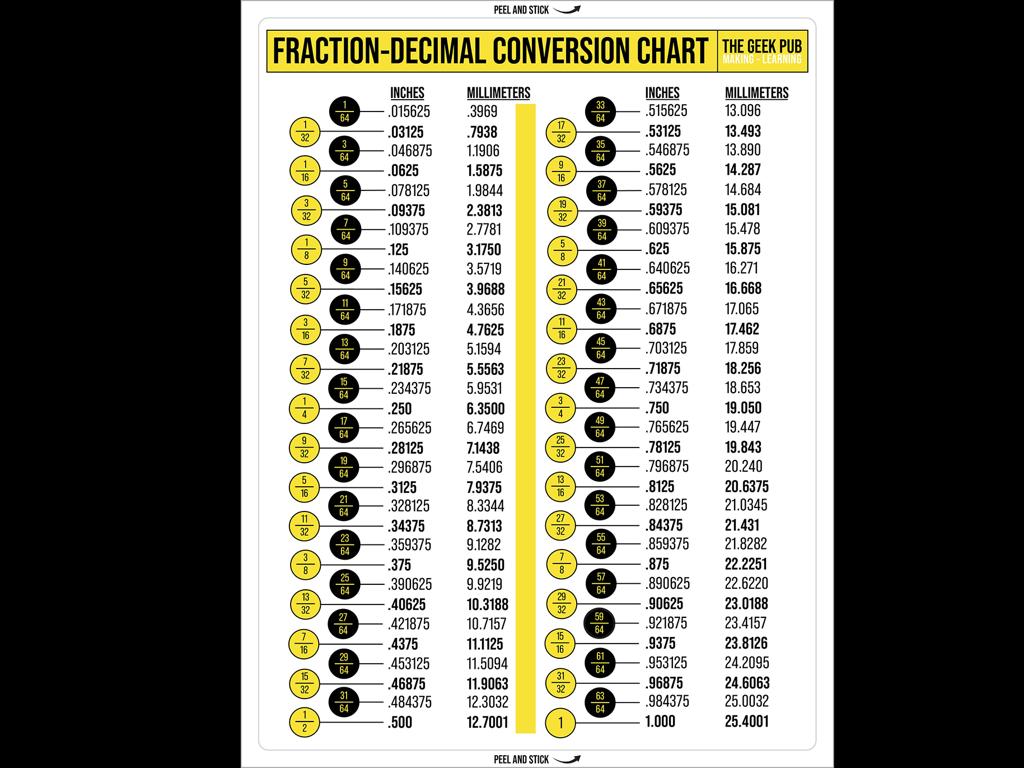Addition Word Problems With Pictures - Sums Up To 5
Subject: Math
Grade: Kindergarten
Topic: Addition Word Problems Up To 5
Please LOG IN to download the presentation. Access is available to registered users only.
View More Content
Welcome to Addition!
– Greet our little mathematicians
– Today’s lesson: learning addition
– Addition combines things into a total
– If you have 2 apples and 3 more, addition tells us we have 5 apples in total
– It helps us count things quickly
– Instead of counting each apple one by one, we can use addition to find out faster
|
This slide is designed to introduce Kindergarten students to the concept of addition in a fun and engaging way. Start with a warm greeting to make the children feel excited about the lesson. Explain that addition is a way of putting things together to see how many we have in total. Use simple, relatable examples like combining apples or toys to illustrate the concept. Emphasize that addition is a tool that helps us count faster, which is very useful in many situations. Encourage the children to think of situations where they have combined groups of items, like snacks or blocks, to set the stage for learning how to solve addition problems.
What is Addition?
– Addition combines groups
– Adding finds total items
– The ‘+’ sign means add
– Example with pictures
– If we have 2 apples and 3 apples, we add 2 + 3 to find out we have 5 apples in all.
|
This slide introduces the concept of addition to Kindergarten students. Start by explaining that addition is like putting things together to see how much you have in total. Use simple language and real-life examples, such as combining groups of toys or snacks. Show the ‘+’ sign and ensure students recognize it as the symbol for addition. Use pictures to illustrate an example, such as adding apples, to help them visualize the concept. Encourage the students to use their fingers or objects to practice adding numbers up to 5. The goal is to make them comfortable with the idea of combining quantities and understanding the basic operation of addition.
Let’s Count Together!
– Practice counting objects to 5
– Count items like apples or balls
– Counting lays foundation for addition
– Understanding counting is the first step to learn addition
– Visual aids make learning fun
– We’ll use pictures to help us count
– Get ready to count with us!
|
This slide is aimed at engaging Kindergarten students in a counting activity that sets the groundwork for addition. Start by introducing objects that the children can relate to, such as fruits, toys, or animals, and encourage them to count along with you up to five. Emphasize that counting is not just about saying numbers; it’s the basis for understanding addition, which is simply putting groups of things together. Use visual aids like pictures or actual items to make the activity interactive and enjoyable. Prepare to lead the students in a counting exercise, ensuring that each child participates and practices counting out loud. This will help them visualize the concept of addition when they progress to adding the groups of items together.
Adding with Pictures: Sums Up to 5
– Pictures help us learn addition
– Count items in pictures for total
– If there are 3 apples and 2 oranges, how many fruits in total?
– Add numbers up to 5 together
– Practice with fun images
– Use drawings of animals, toys, or fruits to make it engaging
|
This slide introduces the concept of using visual aids to teach addition to kindergarten students. By counting items in pictures, children can visually understand the concept of adding two numbers to find the sum. Ensure that the pictures used are simple and clearly depict countable items. Encourage the students to count aloud as they add the items together. Provide a variety of examples with different objects to count, keeping the sums within 5 to match their learning level. During the activity, walk around the classroom to assist and praise the students for their efforts. Prepare to demonstrate with real objects or images on the board if necessary.
Adding with Stories and Pictures
– Stories help us learn to add
– Read the story and look at pictures
– A story about 2 apples and 3 apples coming together
– Use pictures to solve addition
– Count the apples in the pictures to find the total
– Practice with sums up to 5
|
This slide introduces the concept of using storytelling and visual aids to teach addition to kindergarten students. The goal is to make learning math fun and relatable by incorporating it into a narrative. For example, you might tell a story about a character who has two apples and receives three more, then show a picture illustrating this. The students can then count the apples in the picture to solve the problem. Encourage the children to visualize the story and use their fingers or objects to count along with the pictures. This method helps to solidify the concept of addition by connecting it to real-life scenarios. For the activity, prepare several simple word problems with corresponding images that add up to 5, and have the students work through them.
Solving Addition Word Problems with Pictures
– Read a story problem together
– Use pictures to find the sum
– Count objects in pictures to add
– Understand sums up to 5
– Sums up to 5 are like 2 apples + 3 apples
– Practice with an example
– Example: 2 birds + 3 birds = ? Use pictures of birds to solve
|
This slide is aimed at helping Kindergarten students understand addition through the use of visual aids. Start by reading a simple word problem aloud to the class. Use pictures to represent the problem, which will help the students visualize the concept of adding two groups of items together. Focus on problems that result in sums up to 5 to keep the numbers manageable for their level. For practice, present an example problem using pictures, such as birds or apples, and guide the students to count and add the two groups together. Encourage the students to use their fingers or drawing to represent the problem if they find it helpful. The goal is to make addition tangible and fun.
Let’s Solve Together: Picture Addition
– Look at the picture and count the items
– How many items are there in total?
– Let’s add them up together
– For example, if there are 2 apples and 3 oranges, what’s 2+3?
– Can you find the sum up to 5?
– Remember, the sum is the total amount we get when we add numbers together
|
This slide is an interactive activity designed to engage Kindergarten students in solving addition problems with sums up to 5 using visual aids. Display pictures with different sets of items that, when counted and added together, equal 5 or less. Guide the students through the process of counting each set of items and then adding them together to find the total sum. Encourage the students to participate by asking them to count out loud and to come up with the sum on their own. Reinforce the concept that the sum is the final total we get after addition. This activity will help solidify their understanding of basic addition through hands-on practice and visual reinforcement.
Practice Time: Let’s Add Things Up!
– I’ll show you some addition problems
– Use fingers or desk objects to add
– Counting with fingers or pencils can help
– Find the sum of the numbers
– The sum is the total you get after adding
– Remember, sums go up to 5
|
This slide is designed for a hands-on activity where students will practice addition with sums up to 5. Encourage them to use tangible objects like fingers, pencils, or small toys to count and add. This tactile method helps reinforce the concept of addition. As they work through the problems, remind them that the sum is the final total they get after adding the numbers together. For example, if they have 2 pencils and add 3 more, they should count each one to find the sum of 5. Prepare to walk around the classroom to assist students who may struggle and to ensure they understand the concept of addition. Have a variety of simple word problems ready for the students to solve, and consider pairing students up for peer learning opportunities.
Class Activity: Adding with Toys
– Group toy counting activity
– Each group adds their toys
– Discuss what numbers were added
– For example, 2 teddy bears + 3 cars = 5 toys
– Share results with the class
|
This interactive class activity is designed to help Kindergarten students understand addition through a hands-on approach. Divide the class into small groups and provide each group with a set of toys. Instruct them to count their toys and practice adding the numbers together. For instance, if they have 2 blocks and 3 dolls, they should be able to count and add them up to 5. After the activity, facilitate a discussion where each group explains the numbers they added and shares their total count with the class. This will not only reinforce their addition skills but also encourage teamwork and communication. Prepare a variety of toy sets to ensure that each group has a different combination to add, keeping the sums up to 5 to match the lesson’s objective.
Great Work with Addition!
– Celebrate your adding skills
– Addition combines groups
– Like combining 2 apples and 3 apples to see we have 5 apples in all
– Counting leads to great adding
– Keep counting items around you to improve
– Practice to become an addition star
|
This slide is meant to wrap up the lesson on addition word problems with pictures, reinforcing the concept that addition is about combining groups to find a total. Encourage the students by celebrating their effort and success in learning to add numbers up to 5. Remind them that understanding addition is like putting together pieces of a puzzle to see the whole picture. Encourage them to practice by counting objects in their daily life, like toys or snacks, to naturally improve their adding skills. The goal is to build their confidence and demonstrate that math can be fun and part of everyday activities.






